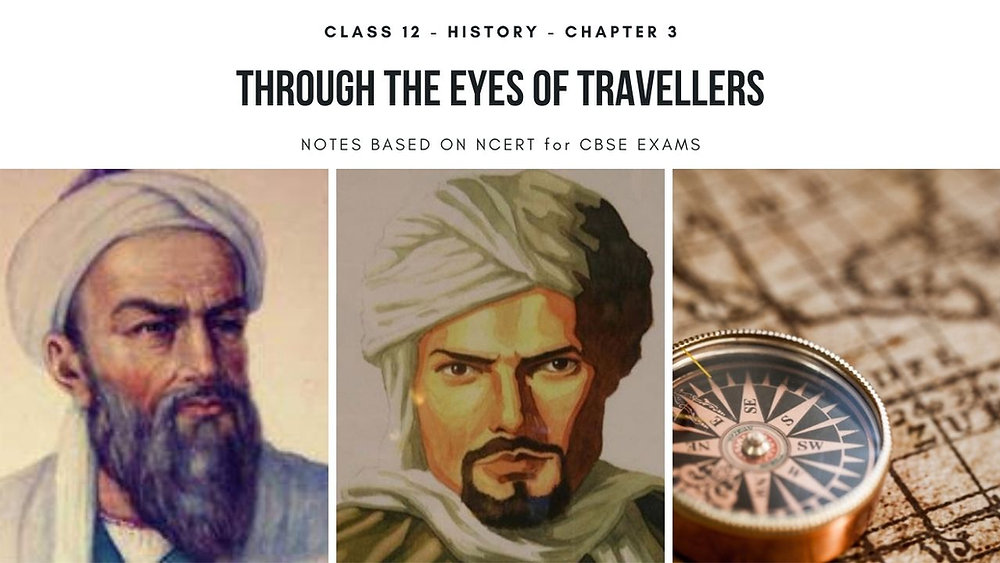Alberuni, Eban-batuta,
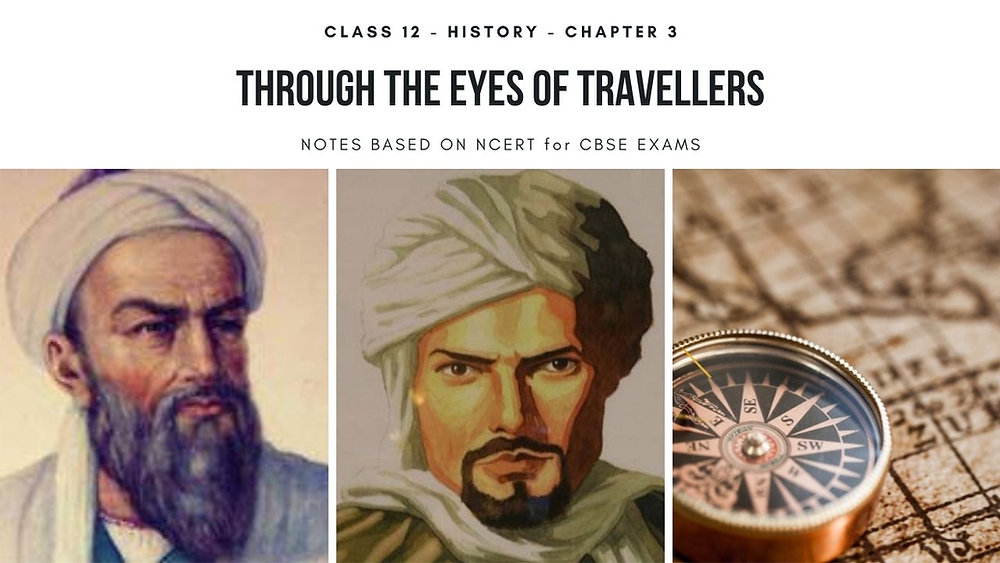
Al-beruni
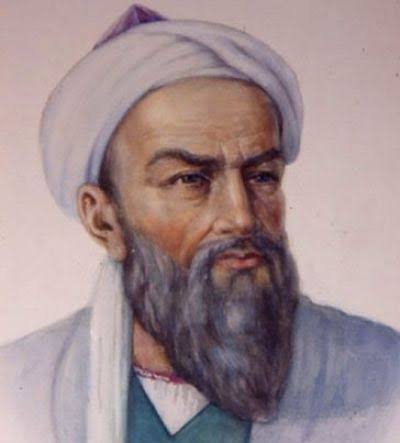
० Alberuni was born in Khwarizm, Uzbekistan.
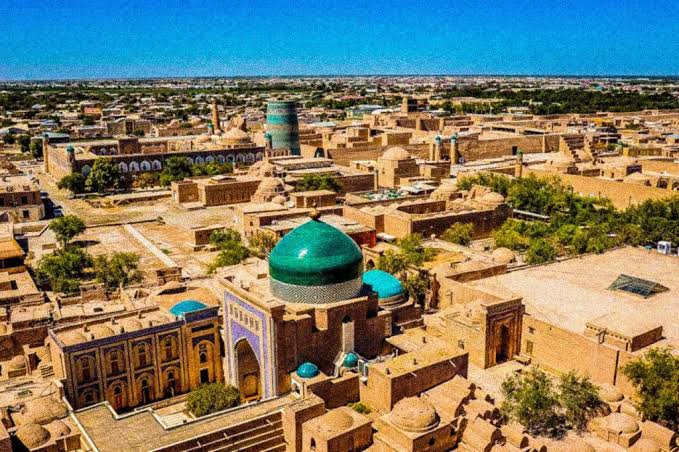
० He was a scholar of Arabic, Syriac, French, Hebrew, Sanskrit languages. But he did not know the Greek language.
० In 1017, Mahmud Ghaznavi
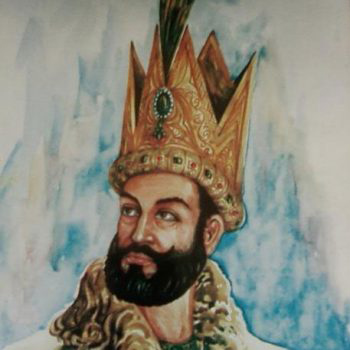
invaded Khwarizm and took many scholars and ashrams to his capital Ghazni, among whom Alberuni was also one. And he died.
० Alberuni developed an interest in India and at the same time mathematics, astronomy, medicine written in Sanskrit were translated into Arabic.
० After Punjab became a part of the Ghaznavi Empire, Alberuni made many contacts with Indian Brahmins, priests and acharyas and for years, he acquired knowledge of Sanskrit and religious philosophy from them.
Kitab-ul-Hind:
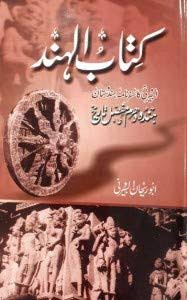
० This is an important book written in Arabic language which has 80 chapters.
० Kitab-ul-Hind is simple and clear in language.
० These chapters include chapters on religion, philosophy, customs, Christianity, festivals, astronomy, social life, Indian measuring instruments, European law, measuring instruments, science etc.
० From this book we get clear glimpses of India from the end of 11th century to the early decades of 11th century.
० Alberuni was an expert in the subjects of Sanskrit mathematics, philosophy, astronomy, medicine.
० Each chapter is written in a special style which starts with a question. After this, the subject is described according to Indian tradition and finally it is compared with other European artists.
० He wanted to improve some texts written in Sanskrit and Prakrit Sagar.
० The historian has been told that the reason for the clarity of Albiruni in the structure of ‘Kitab-ul-Hind’ and the replication of his mathematics.
० He translated the grammar of Patanjali into Arabic.
० He translated the mathematical work of Euclid into Sanskrit.
Alberuni and the Political condition of India:-
० India was divided into small states and all the states were independent, in which there was a lack of friendly unity. Kashmir-Malwa, Kann were famous states.
० The king exploited the people autocratically.
० The border was on the border. The king was completely unconstitutional.
० At that time, power had been decentralized. The feeling of patriotism, unity and unity had almost ended.
० The rulers did not have their permanent army. The kings of the army were dependent on the feudal lords. The number of elephants was more and the speed of the horsemen was nominal.
० The Rajputs had a studiousness and no one paid attention to strengthening the borders of the country.
० The Turks had good breed horses and a trained army.
Alberuni and the Economic condition of India:-
० India was a priceless country. The mythological and monasteries here had immense wealth, gold, silver, diamonds and jewels.
० There was abundant production of grains and other goods here and there was abundance of minerals here.
० The main sources of income were agriculture, warehouse, gardening, trade and industries. Irrigation was done through canals, wells and ponds.
० 1/3 to 1/2 part of the produce was taken as rent.
० The feudal system was dominant and the feudal lords now had the right to collect rent.
० The globalized chieftains attracted foreign invaders.
० There was a desire to improve some texts written in Sanskrit and Prakrit.
० There were developed industries of cotton, woolen and silk cloth and Bengal’s muslin industry was very famous.
Alberuni and the social condition of India
० According to Tahqiq-e-Hind, Indian society was divided into two parts from the economic point of view:- exploiter and exploited class
० The rich class had control over the resources while the exploited class had to face many difficulties in earning their livelihood.
० The roots of caste system had spread. Brahmins were considered to have originated from the mouth of Brahma and were given the highest status.
० He tried to explain the caste system through the social classes of Persia.
(i) Horsemen and ruling class
(ii) Monks, Anusonic priests and doctors
(iii) Astronomers and other scientists
(iv) Farmers and craftsmen
० He accepted the Brahminical explanation but rejected the belief of impurity. He said that every object which becomes impure tries to regain its purity.
० First place was given to Brahmins, second rank to Kshatriyas (originated from Brahma’s arms), third rank to Vaishyas (originated from the stomach), fourth rank to Shudras (originated from the feet).
० The condition of women was not respectable in this period. There was a custom in Rajputs to get girls married as soon as they were born. 8 types of marriages were prevalent in the society. Birth of a girl was considered inauspicious.
० Child marriage and polygamy were prevalent.
० Jowar, millet, wheat, gram, fruits and vegetables were popular in North India, while rice and fish were the staple food in South India.
Obstacles faced by Alberuni:
० The first obstacle was language. Alberuni did not know Sanskrit and other Indian languages, so it was difficult for him to talk to the local people and read the scriptures.
० The second obstacle was religious practices and local customs which were difficult for foreigners to understand.
० The third obstacle was pride. Due to pride, the local people did not want to talk to foreigners.
० The fourth obstacle was the lack of nationalism because the entire country was divided into small pieces which was not easy for foreign travellers to understand.
Ibn Battuta
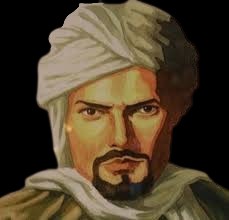
० Ibn Battuta was a famous traveller from Morocco in the 14th century who wrote a book called ‘Rihla’.
० Impressed by his scholarship, Sultan Mahmud appointed him as the ‘Qazi’ of Delhi. (1335 AD)
० He was born in an educated family of Tangier which was famous for the excellence of the palace of Sharia.
० He received education based on Shastra Shastra at an early age.
० He was fond of travelling and before coming to India, he had travelled to Syria, Iraq, Persia, Yemen and many countries of Africa.
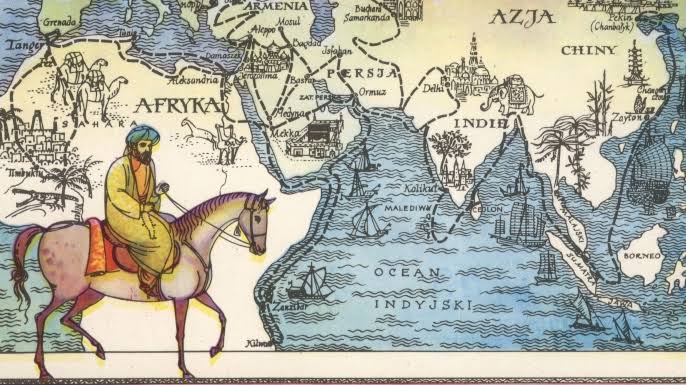
० 1342 AD he was sent to China as the envoy of the Sultan.
० He reaches the city of Zaytun in China via the Malabar coast, Sri Lanka, Maldives and Sumatra.
० Returned home in 1347.
० His accounts about China are compared to the travels of Marco Polo.
० Ibn Battuta was a persistent traveler who traveled to some of the star-studded countries of North East Africa, Western Asia, Medieval Asia, China and Russia.
० According to Ibn Battuta, the journeys were frustrating at that time and the post had repeated storms many times.
० He always preferred to travel in a caravan with his companions. He was badly injured due to the attack of bandits in the journey from Multan to Delhi.
० According to Ibn Battuta, the journey (from Multan, Sindh to Delhi) took 40 days, while Ibn Battuta also recorded the journey to Delhi as taking 40 days.
० Ibn Battuta recorded new buildings, new people, Christians living very cautiously and poverty-stricken residential areas.
० Ibn Battuta had a special interest in visiting the Annai temple and traditions. He was surprised by the use of coconut water in India.
० He depicted the coco as a human head, as shown in the picture below with two heads and a mouth. The inside of the fruit resembles the brain.
० The betel leaf is a tree that has no flowers and only its arils are used in various ways.
Ibn Battuta and Indian Cities
० Ibn Battuta found the cities of the subcontinent to be full of exciting opportunities, aid and skills.
० These cities were densely populated and prosperous.
० Most of the bazaars were glittering and colourful cities filled with all kinds of goods.
० According to him, Delhi and Namakbad (Maharashtra) were very large and highly populated cities.
० Delhi city has 28 gates of which Badaun Gate is the largest.
० Near Mawani Door there is a grain market and near Gul Door there is a flower garden.
० The bazaar was not only a place of economic exchange but it was also a centre of other social and economic differences.
० All the bazaars had a temple and a mosque.
० There were public places for the performance of dancers, musicians and singers.
० Indian clothing muslin, silk brocade and satin was in great demand in the countries of Central and Western Asia.
० The craftsmen and tribals had suffered a great devastation in the same way.
० It was a mixture of Indian soils where farmers could easily grow two crops a year.
० Abdabad had a special market for male and female singers called Tarabad.
० This system was so efficient that the journey from Sindh to Delhi took only 5 days.
० The postal system was of two types:
(i) Uluk (horse)
(ii) Dawa (foot)
० The horse (horse) postal system was called Uluk which was operated by standard boards at every 5 miles.
० The foot postal system was called Dawa. The messenger carried the letter in one hand and a hood with bells in the other.
० The foot postal system was called Dawa. The messenger carried the letter in one hand and a hood with bells in the other.
० The foot postal system was faster than the horse postal system.
François Bernier and Travels in the Mughal Empire
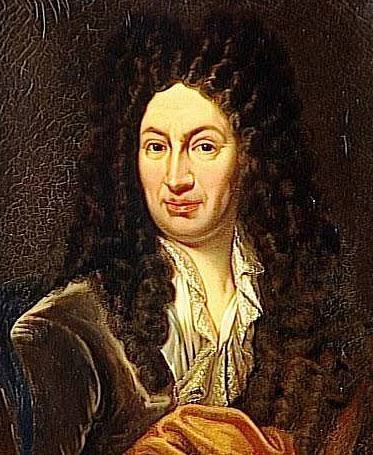
० François Bernier was a French traveller.
० He was a great physician, political theorist and historian.
० He travelled through India and the Mughal Empire from the Mughal Empire to the Crown for 12 years from 1656 to 1668.
० He accompanied Emperor Shah Jahan’s son Dara Shikoh as his chief physician.
० He travelled to many parts of India. He also compared his situation in India with that of Europe and France.
० Bernier’s works were published in France in 1670-71 and were later translated into English, Dutch and German.
० His famous book is titled ‘Travels in the Mughal Empire’.
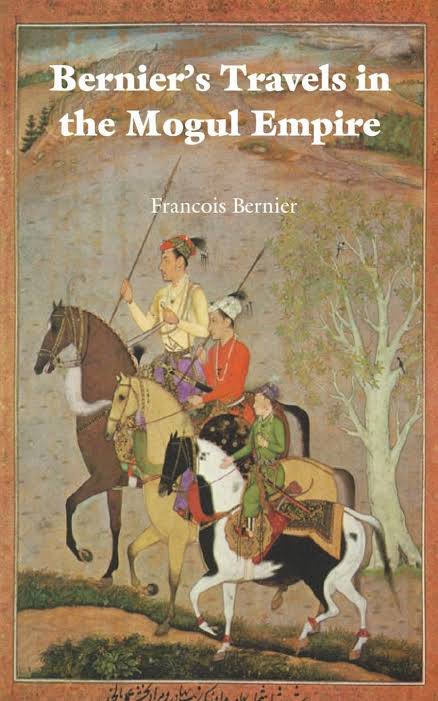
० Bernier called the Mughal emperors “kings of beggars and tax collectors”. According to him, the disintegration of Mughal cities has now ended and the “bad air” has ended.
० Bernier described the condition of India in comparison to the developments in Europe. However, his regional documentation was not accurate.
० Bernier called the Mughal cities as camp towns which were adamant on national protection for their opinion. On the contrary, all types of cities were found in the Mughal period such as production centers, commercial towns, port towns, religious towns etc.
० It was claimed about the foot post system that the messenger participated with the letter in one hand and a bell-hood in the other
० The foot post system is faster than the horse post system.
